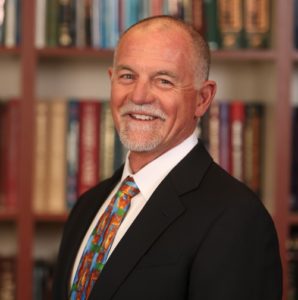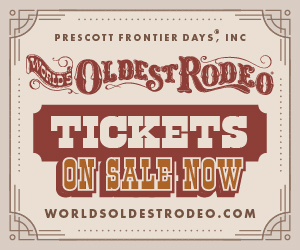 The facts about osteoporosis in the United States (according to the International Osteoporosis Foundation):
The facts about osteoporosis in the United States (according to the International Osteoporosis Foundation):
- More than 10 million Americans have osteoporosis.
- Nearly half of all women and one in 12 men age 50 and older will have at least one osteoporosis-related fracture in their lifetime.
- Nearly 1.5 million osteoporosis-related fractures of the back, wrists and hips occur each year.
- Nearly 75 percent of all hip fractures occur in women and approximately 90 percent of women over the age of 75 have osteoporosis.
- Only 20 percent of those who experience an osteoporosis-related fracture pursue follow-up treatment for osteoporosis.
- Of those elderly patients who experience a hip fracture, as many as 40 percent die within one year of suffering the fracture.
- Post-menopausal women can lose up to 20 percent of their bone mass in the first five to seven years following menopause.
What is Osteoporosis?
Osteoporosis means “porous bones” and those with the condition develop weak, brittle bones that can fracture with only a small amount of stress, such as bending over or coughing. The most common fractures occur in the spine, hip and wrists.
What are the Symptoms?
Unfortunately, most people don’t know they have osteoporosis until they have a fracture. Subtle but serious warning signs to look out for, such as a stooped posture, loss of height and chronic back pain, can signal bone loss and possible minor fractures related to osteoporosis.
Causes, Rick Factors
Throughout our lifetimes, our bones are constantly being built. However, our bone mass peaks at age 30 and then begins to slightly deteriorate and we lose more bone than we replace. Besides age and genetics, there are several other factors that increase the risk of developing osteoporosis, including:
- Low calcium: Low amounts of calcium affect bone mass and density, as calcium is one of the body’s bone building blocks.
- Tobacco use: Smoking is linked to decreased bone density. Additionally, smokers typically are thinner than nonsmokers, tend to drink more alcohol and may be less physically active, all of which increase the risks.
- Eating disorders: Anorexia nervosa and bulimia lead to lower bone density and can impact the amount of calcium and vitamin D the body receives.
- Inactive lifestyle: Less-active people have weaker bones than those who exercise regularly.
- Alcohol intake: Having more than two alcoholic drinks a day on a regular basis can interfere with the absorption of calcium.
- Risk factors you can’t avoid: Being a woman, being Caucasian or of Asian descent, a family history of osteoporosis, having a thin frame and being over the age of 65.
Detecting Osteoporosis
One of the best ways to detect osteoporosis is to measure bone density using a DEXA (dual energy X-ray absorptiometry) scan. A DEXA scan is currently the most accurate and reliable means of assessing bone density and the risks of bone fractures.
The five- to 10-minute scan is painless and no special preparations for the scan are needed. Unlike an MRI or CT, a DEXA scan doesn’t involve being enclosed in a tunnel or ring. Patients lie on an X-Ray-like table (it is important to remain still during the scan so the images are not blurred). A large arm scans the body using low-dose X-ray imaging.
Regardless of age or gender, anyone who has one or more risk factors for osteoporosis should have a DEXA scan. Women over the age of 65 and men over the age of 70 are encouraged to schedule a bone density test to make sure bones are strong and healthy and to catch any possible signs of osteoporosis.
Early detection means more treatment and preventive options.
Preventing Osteoporosis
There are several medications and hormones that can help treat osteoporosis, but the best treatment is prevention. Try to eat foods that are rich in calcium and vitamin D – milk, fish and leafy greens are great sources. Exercise regularly and incorporate strength training and weight-bearing exercises to keep bones strong and support the important muscles around them.
Northern Arizona Orthopaedics Bone Health Clinic
The Bone Health Clinic, part of Northern Arizona Orthopaedics Arthritis and Fracture Care Center, is designed for those who have, or are at risk of, osteoporosis. The clinic provides education and information about bone health and assists in the management of bone-related health conditions; the navigation of care, medications, therapies and treatment options; and the prevention of future osteoporosis-related fractures. Each member of the bone health team is specially trained in the areas of fractures, bone health, therapy and treatment options, and nutrition. Our goal is to keep you healthy and treat your osteoporosis before a fragility fracture occurs.
To make an appointment at the Bone Health Clinic call 928-774-7757 or visit NorthAzOrtho.com/appointment-request. To learn more about Northern Arizona Orthopaedics’ extensive services, expert physicians and staff, and locations, visit NorthAzOrtho.com. FBN
By Timothy Bonatus, D.O.
Dr. Timothy Bonatus is an orthopaedic surgeon at Northern Arizona Orthopaedic and practices in the Arthritis and Fracture Care Center. He specializes in a General Orthopaedics, Trauma, Fracture Care and Arthroplasty Surgery of the Hip and Knee.







